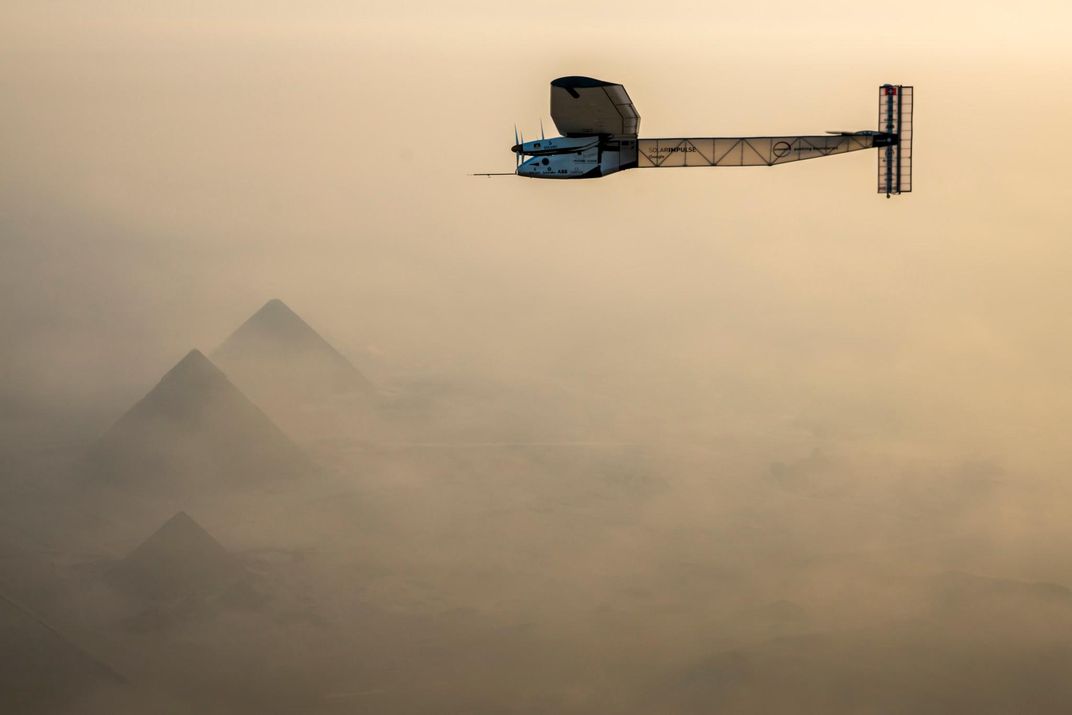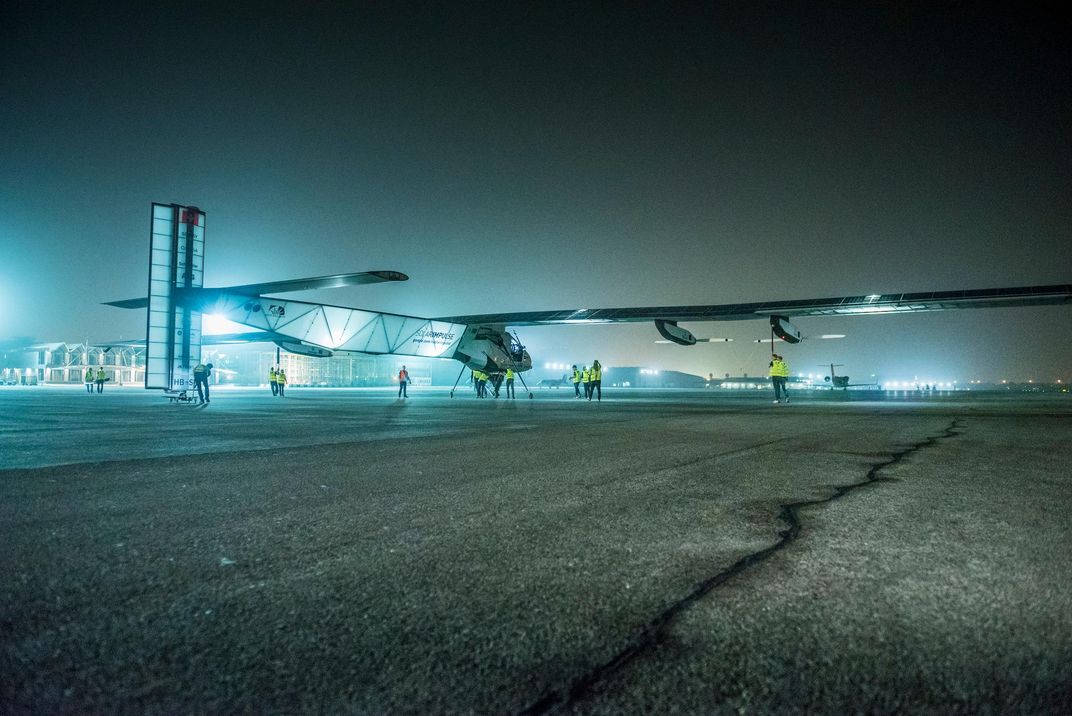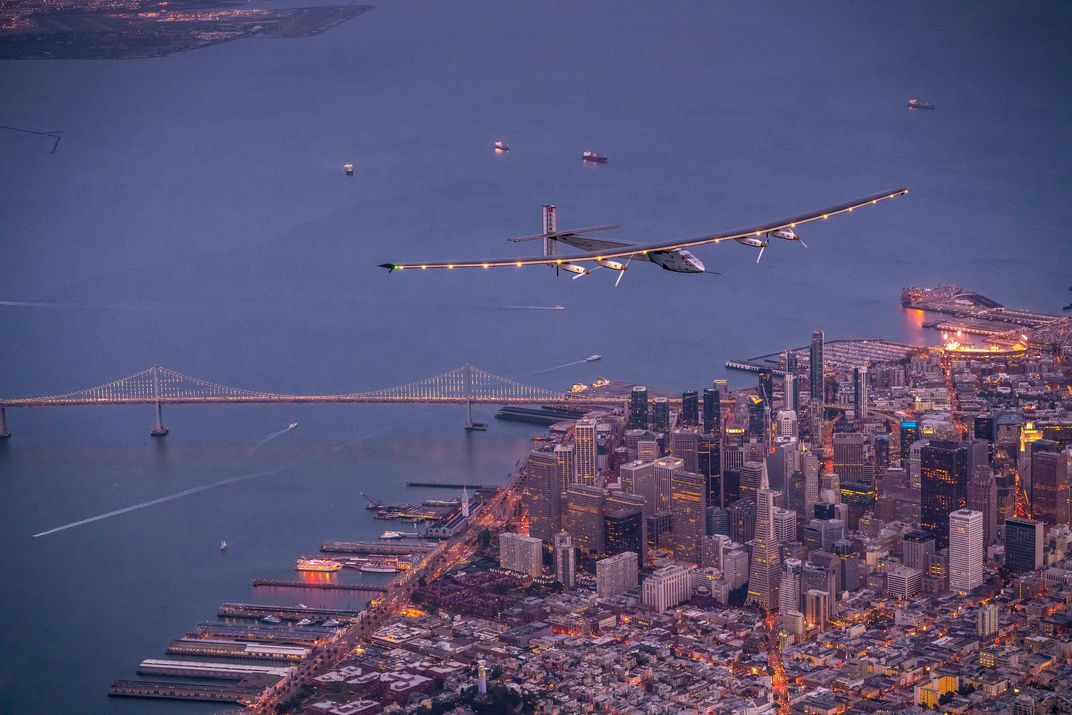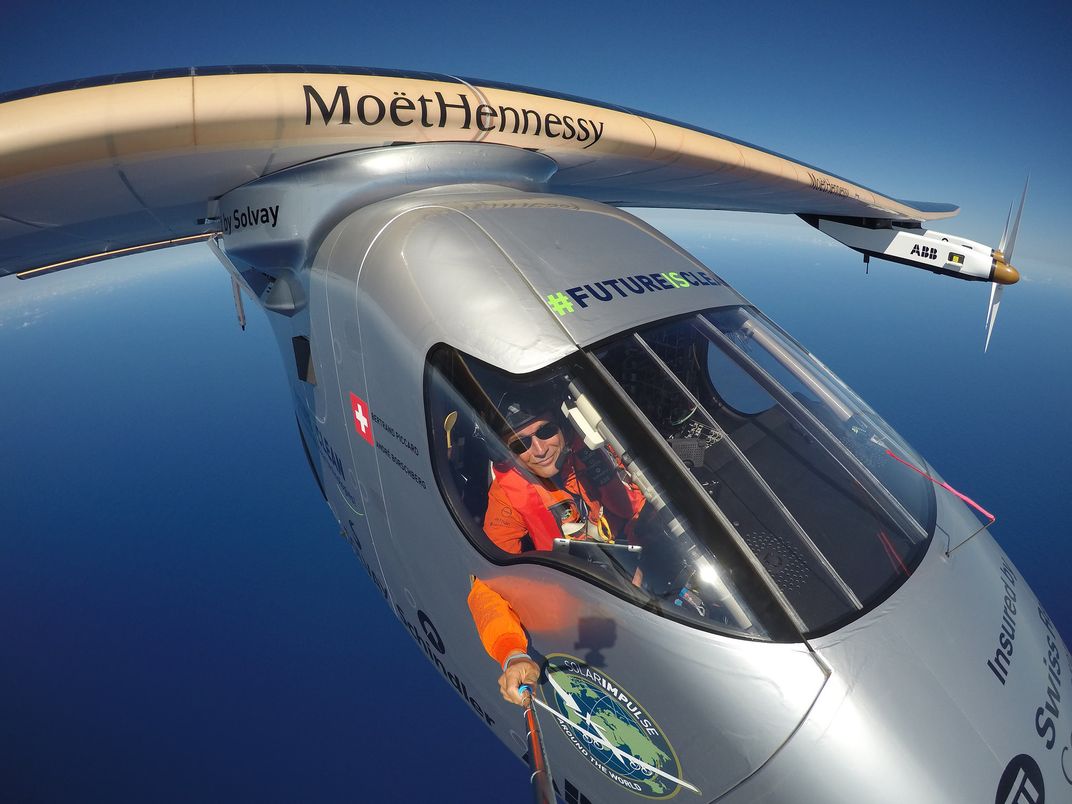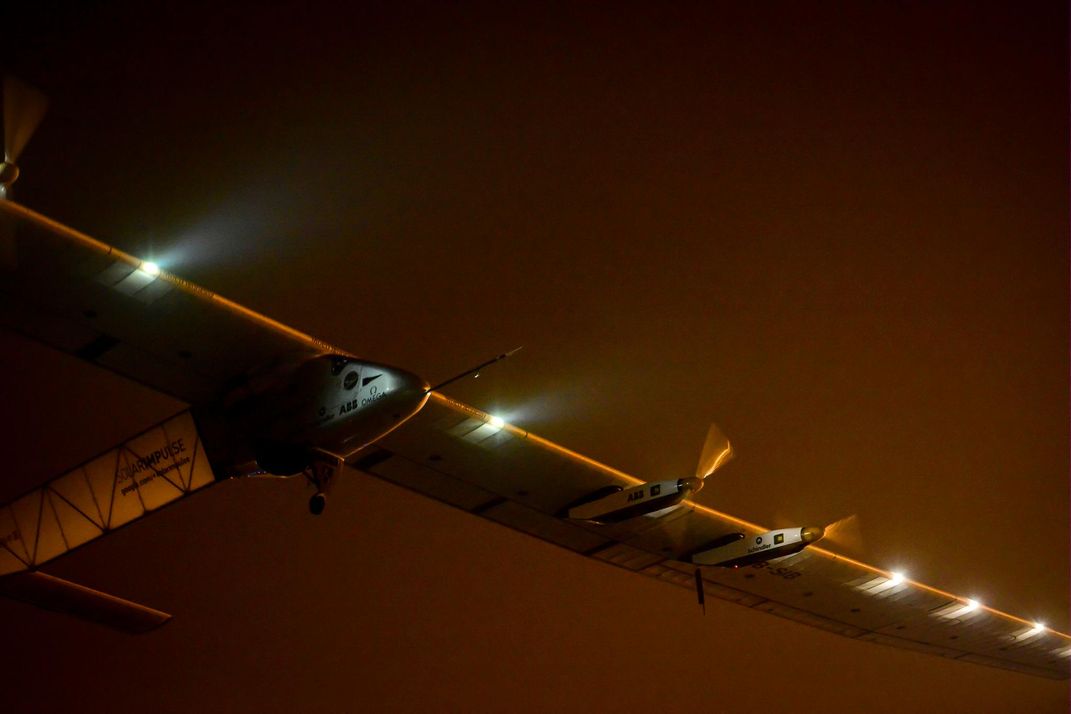Solar Impulse 2 Finishes Its Epic Round-the-World Trip
And all without using a drop of fuel.
The first round-the-world flight by an electrically powered aircraft ended successfully yesterday as Solar Impulse 2 touched down where the trip began in March 2015, in Abu Dhabi, United Arab Emirates. Pilot Bertrand Piccard landed the aircraft after more than two days in the air between Cairo and Abu Dhabi.
Altogether, Solar Impulse 2 spent around 23 days in the air over its 17-month trip. In contrast, the fossil fuel-powered Voyager made its 1986 nonstop, round-the-world trip in just over nine days.
The flight ends a 15-year, $170-million project meant to demonstrate the practicality of environmentally friendly propulsion. A previous, smaller version of the aircraft, the original Solar Impulse, flew across the United States in 2013.
Though the flight demonstrated that electric-only flight is possible, it also illustrates how impractical it still is. The airplane cruised at an average of only 50 miles per hour, a slow pace that tested the pilot’s endurance as well as the batteries. The longest leg was 117 hours in the air between Japan and Hawaii, after which Solar Impulse was grounded for nine months with severe battery damage (which the team attributed to errors now rectified). The airplane was built of extremely light materials, and the top of its fuselage was lined with solar cells. It flew at night using battery-stored energy.
Interest in alternatives to jet fuel is rising, but technology has not yet arrived to make it practical. Batteries can only store so much energy per ounce of weight, far less than what standard jet fuel allows. Several electric-only or hybrid-electric general aviation aircraft are in testing, but the field remains in its infancy; until battery energy density improves, electric aircraft are limited to niche roles that require either very small payloads or very short endurances.
Still, greatness springs from modest beginnings. Charles Lindbergh only averaged 105 mph during his solo 1927 flight across the Atlantic, a speed that 20 years later would be considered pokey. It may take us longer to reach that threshold with electric power, but the future is wide open.
